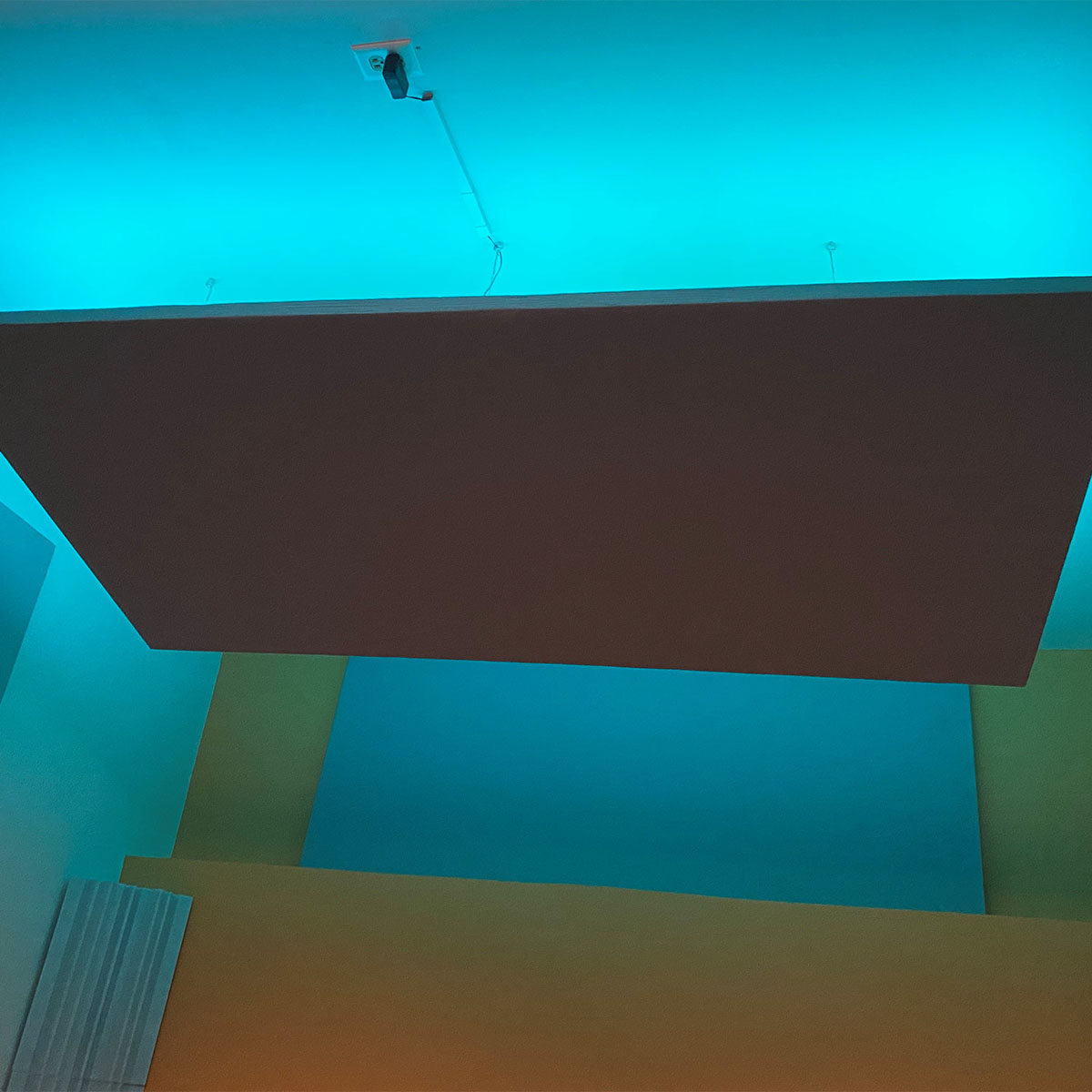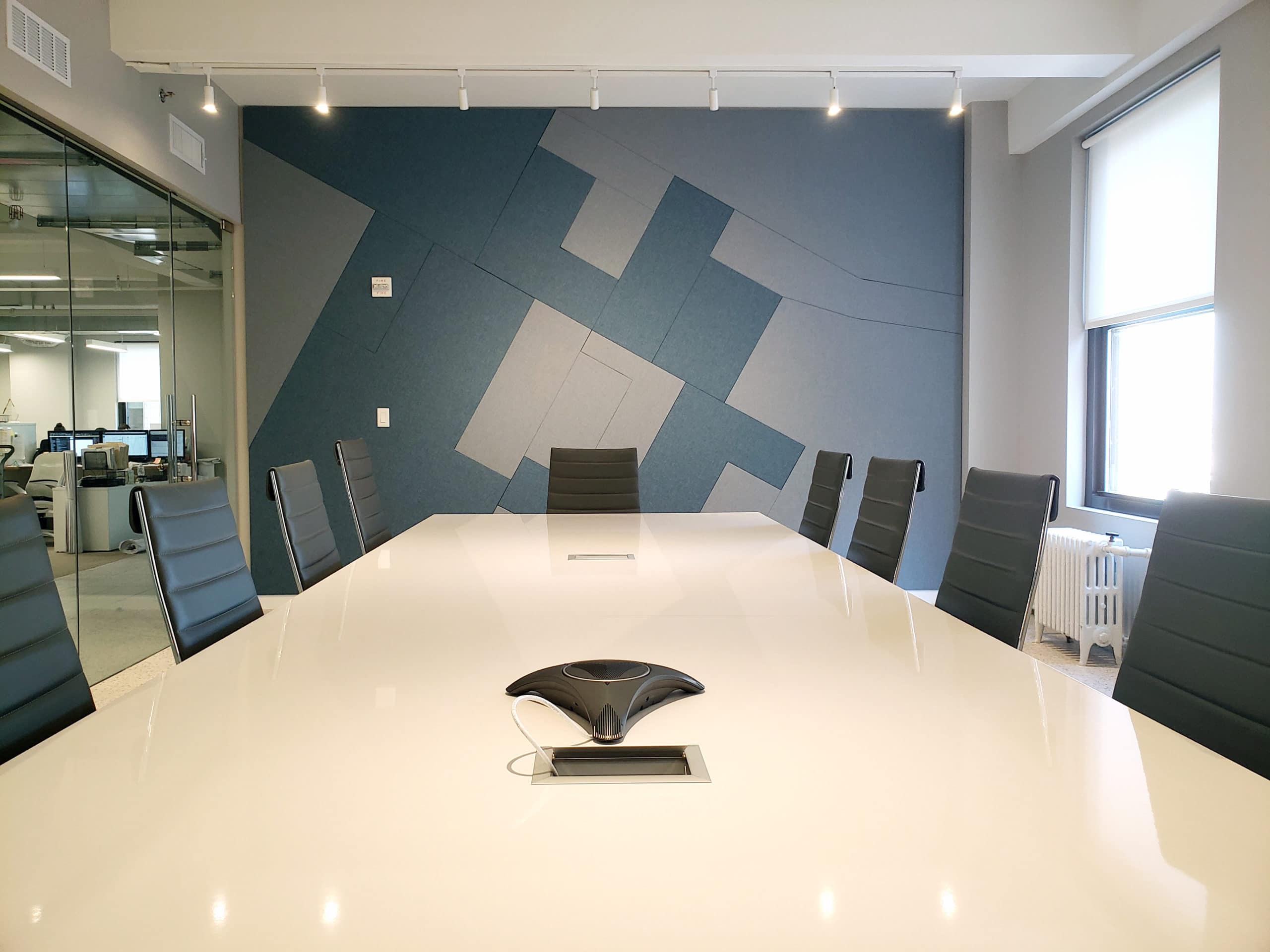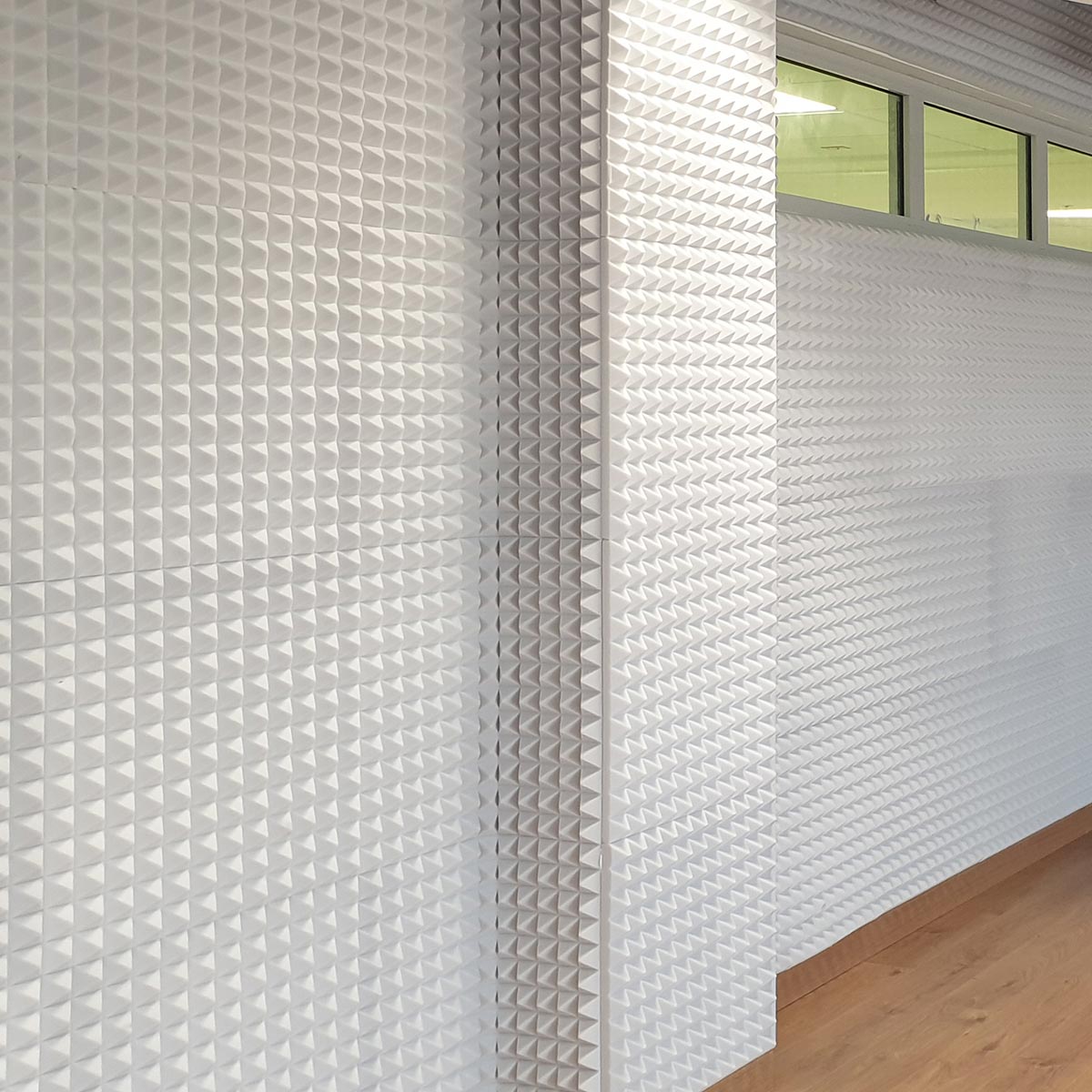If you are looking to soundproof your space effectively, testing is a must. You could wing it and rely solely on your ears to check for success, but for almost all the reasons you would want to soundproof, using your ears is a waste of time and money—especially considering that there are simple, cheap tests nowadays you can do at minimum that can provide a powerful baseline for choosing the correct soundproofing products.
In this article, I’m going to assume you’re a professional or—at least, a prosumer— and want to take soundproofing seriously, and for some soundproofing scenarios, sound insulation testing is a serious, professional business.
Soundproofing is a science that maximizes art and function, so we need to utilize precision in the planning stages before buying any product that offers soundproofing capabilities to achieve desired results.
You can expect to learn the purpose of soundproofing, how it works fundamentally, how to decide on the level of soundproof testing for your specific needs, and finally the types of materials and products you can then purchase and install to achieve your acoustic goals.
A Quick Overview Of Soundproofing

Distilled Sounds Studio Whisper Acoustic Cloud with LED Lighting
Soundproofing is how we block sound from leaving and entering a specified space. Fundamentally, sound is a vibration that emanates through a medium (air and matter, like walls and ceilings) from a source until it loses its energy and can no longer be heard.
I like to think of sound waves as arrows and soundproofing materials as shields. If you hold up a t-shirt as a shield to an oncoming arrow, you’re going to be in trouble! If you hold up a heavy oaken shield, it will easily absorb the arrows energy and stop it. In the same way, certain materials are better than others at stopping sound waves by removing their energy. You can easily hear a dog barking through your screen door, but would have trouble hearing anything at all if it were a wall of concrete.
There are many reasons someone may want to soundproof, and here are some of the most common that I hear from customers:
Home Studios

Distilled Sounds Studio Recording Desk
To block the sounds of the outside world (trucks, sirens, barking dogs) from entering the studio. Likewise, block the sounds of drums, instruments, and amplified playback from leaving the studio and disturbing adjoining spaces.
Home Theaters

This Live Wire Home Theater utilized a fabric track system to combine absorption and diffusion for a seamless design.
To block the artfully designed sounds and music created for films from disturbing adjoining spaces so they can be played at their optimal volume.
Professional Offices

ROART-designed Conference Room
Whether it’s a law office, medical room, or government building, privacy is important to keep sensitive information contained and not heard in adjoining rooms.
To achieve these goals, we have to understand the sonic picture of the space in question via testing and then utilize that data to select the proper shield.
Understanding Sound Insulation Testing

American International School of Jeddah – For this project, the contractor installed cut and painted Flat Acoustical Foam, in combination with our Pyramid Acoustic Foam, for a unique, designer finish.
When we’re conducting sound insulation testing it’s important to measure the structure to determine the baseline. When new structures are built that require tight acoustic environments, such as government buildings like Sensitive Compartmented Information Facilities (SCIFs) or laboratories, soundproofing materials and methods will be part of the architect’s blueprints and constructed as part of the process.
To test for soundproofing, it’s important to understand the level of severity of your specific application. Soundproofing a home theater or home studio, for example, can readily be done with a DIY approach, if desired. There are excellent, and often free, softwares you can use with cheap reference microphones to achieve great test results to plan your remodel and soundproofing materials.
But if you want the best sound insulation testing, it’s always best to contact a professional, especially if you’re soundproofing a medical facility and need to abide by HIPAA regulations. Professionals with experience and knowledge can maximize precision and adhere to all relevant regulations.
Common Terms Associated With Acoustics and Soundproofing To Understand
Before looking at how to test soundproofing, it’s important to understand the common acoustic ratings:
Sound Transmission Class (STC) Rating
An STC rating is a measurement used to calculate the effectiveness of soundproofing materials in reducing sound transmission between rooms. In other words, when performing sound insulation testing, the STC rating identifies how many decimals you’re going to block or reduce in a given material.
The higher the STC rating, the more effective the material is at reducing sound transmission.
Noise Isolation Class (NIC) Rating
A NIC rating is a field measurement of the total sound insulation performance between two rooms. Essentially, an NIC is the field test version of an STC. It’s the same test, but STC is more accurate as it’s performed in a lab in controlled conditions.
Noise Reduction Coefficient (NRC) Rating
An NRC rating is the average of how much sound an acoustic product can absorb, or how much reverb and echo can be reduced. Like a sponge absorbs water, an acoustic product absorbs sound and the NRC tells us how much sound those products can soak up.
Put simply: STC and NIC ratings are geared towards either containing the sound or keeping unwanted sounds out, while NRC ratings are for making your room sound better.
Sound Insulation Testing: How To Test Soundproofing

A speaker is used to generate high-intensity broad-spectrum noise for testing in adjacent spaces.
The first step to properly soundproof a space is to understand its baseline, or how sound is blocked as is. Not only are the sizes of spaces important, but buildings are built with different materials with different techniques that can be more soundproof or less soundproof. Even just knowing how and with what a wall was built isn’t precise as imperfections in the build or other nuances that can allow sound to leak through. The only way to truly know is to test.
DIY vs. Professional Soundproof Testing
There are two ways to test soundproofing in your space: do it yourself or employ a soundproofing professional, also called an acoustician. The latter will always be preferable because of their instruments, skill, and knowledgeable insights but, depending on your goals and budget, an acoustician isn’t entirely necessary.
We live in a wonderful time where the “prosumer” can readily test the acoustics in their space with cheap equipment and software to determine a relatively precise reading from which to select the right soundproofing materials. In the most basic version, there is free software that can be found as a phone application that uses the phone’s microphone.
While you can get decent results with your phone, the one aspect lacking is the microphone. It’s simply not capable of getting precise readings. To solve this, there are numerous, relatively inexpensive reference microphones you can purchase that will dramatically improve your results while utilizing the same software.
How to Test Soundproofing Through DIY Methods
Step 1: Selecting The Sound Source
You want to perform your test by selecting a frequency in the software at a set decibel level. In choosing the frequency and decibel level, it’s important to consider the sounds you are soundproofing for because different frequencies are harder to soundproof for than others.
If soundproofing a home studio, for example, consider the types of sounds you’ll be making. (Drums, for example, create more low frequencies and are therefore harder to soundproof than the sounds of voices and acoustic guitars.)
You would then be best served by selecting a lower frequency for your testing. Likewise, if you’re testing for a home theater, the loudest parts of a film—explosions, gunfire, etc —are the sounds that need to be soundproofed for most, so select a frequency that applies.
Often home theaters employ subwoofers to pack that low end punch, so, again, selecting a lower frequency and at the volume you’ll be playing it is key.
Step 2: Reference Microphone Setup And Data Collection
The more data you collect, the more precision you can achieve via the DIY method. At minimum, the space needs to be tested and the space in adjoining rooms needs to be tested.
Begin by placing the microphone in the middle of the space with no sound for a baseline reading. Once complete, turn on your sound source and test it playing your chosen frequency. Finally, place the reference mic in an adjoining room, turn on the sound source, and run the test. You should then perform these tests again so you have two sets of data for precise results.
To be even more precise, you can test the space to be soundproofed with multiple placements of the mic. I suggest testing once with the mic near the soundsource, once with the mic in the middle of the room, and a final time with the mic at the farthest end of the room. Again, do all of these tests at least a second time so you can get a good data set. The more points of data you collect, the more precision you will have to make the right choice for your specific circumstances.
Step 3: Data Analysis
There are numerous references available on the internet that you can analyze with your collected data to determine how your room is currently soundproofed and the materials and methods you need to employ to achieve your final goal. By comparing test results to industry standards and benchmarks, you can get a great idea of what you will need to soundproof the room.
If you’ve exhausted your DIY skills, you can share your results with an acoustical professional who can analyze it for you. This is the best of both worlds, because you saved money by performing the tests yourself, but now you can rely on a professional to take the data and use their knowledge of acoustics and soundproofing products and materials to find exactly what you need.
Professional Soundproof Testing With An Acoustician
If you’d prefer a professional to perform soundproof testing, then you can rely on an acoustician. Not only is an acoustician expertly experienced in testing the acoustics in spaces, but they utilize extremely precise equipment that costs thousands if not tens of thousands of dollars, something simply not in the purview of a DIYer looking to do acoustic testing for a one-off project.
Additionally, and perhaps just as important, acousticians have immense knowledge in terms of wall assemblies and how rooms are constructed. Using their ultra precise equipment, they can zero in on specific problem frequencies and quickly understand how or why the way the room is built and with what materials are causing those frequencies to leak.
FAQs for Soundproofing and Sound Insulation Testing
What Materials Are Used For Soundproofing?
AudioSeal® Mass Loaded Vinyl Sound Barrier
There are a number of materials with excellent STC ratings that can be used depending on the placement (wall, ceiling, etc.). Mass Loaded Vinyl is one excellent material we utilize for soundproofing.
Can I Soundproof Windows And Doors?

Soundproofing a window is easy with PrivacyShield
Yes, and you need to if they’re in your space! You’ll notice that film theaters and studios do not have windows. Of course, in theaters where you’re projecting the image you don’t want natural light affecting it, but you also want to keep sound from entering and exiting, and windows and doors are unfortunately prone to this. That said, we offer excellent soundproof window inserts, door seal kits, and even entire doors for you to effectively soundproof.
Does Ventilation Affect Soundproofing?
The most unfortunate circumstance is properly soundproofing walls, ceilings, windows, doors, and floors only to realize you missed the ventilation! Ventilation equipment and systems can absolutely affect soundproofing, and needs to be taken into consideration.
When testing, you will want to run your HVAC systems as part of the test to see how negatively – if at all – it is impacting the situation, so you can include treating that aspect of the room as well.
What Types Of Noise Can I Block Out?
All kinds! All sound is the same, there are just differences in frequency (pitch) and intensity (loudness). Generally speaking, the lower the frequency and greater the intensity, the more “dense” soundproofing materials need to be in order to be effective.
For example, if your space is often passed by traffic, the rumble of larger vehicles could pose a much bigger problem than the bark of a dog or sound of voices, and will need to be taken into consideration.
Does Furniture Help With Soundproofing?
Yes, any added material helps block sound, but you want to be careful as furniture in your space might negatively affect the experience you’re trying to create. For example, if a chair is between you and the speakers, it will block sound, but you want to hear that sound! Things like rugs and carpet are excellent soundproofing helpers for home studios and home theaters.
Trust In Acoustical Solutions To Help Your Soundproofing Project Via Testing and Products

Eric K’s Home Listening Room with AlphaSorb® Acoustic Foam Bass Traps and Sonex® Junior Foam
I enjoy the DIY mindset and am more than happy to help you find the right equipment to help you get the best results during the sound insulation testing process. Then, together we can look at the results to determine what strategies and soundproofing products we can employ to effectively soundproof your desired space.
If you’d like a recommendation for a professional, we can provide a database of acousticians across the country which we can also recommend. We’d rather send our guy, but if it’s not in the budget it’s not in the budget!
If you’re interested in a professional test with our experts, we offer 3 different levels of service:
- Send a sales engineer to perform basic RT60 testing (echo and reverb time in the room) to determine what kind of soundproofing techniques and materials are necessary to achieve your goals. This is a great option if you’re looking to soundproof a home theater or studio and would like assistance in the testing phase.
- An on-site consultation. With this offering, we focus on what the room sounds like by providing a more in-depth analysis in reference to specific frequencies. I recommend this option for those looking to outfit an existing space for a medical office or law office and are looking to expertly soundproof per regulatory requirements.
- Full acoustical study with an acoustician. We work with incredible acousticians and can have them perform the apex of soundproofing testing anywhere in the U.S. or internationally. STC/NIC testing, impact test, and echo/reverb allows us to construct a unique testing plan to precisely identify the data and then analyze it against the structure and its current materials, and verify with post testing.
Give me a call today and let’s talk about your soundproofing project! There is nothing too big or too small that we can’t handle, and I’ll be able to steer you towards the industry’s best products after testing completes to achieve the exact results you’re looking for!
To learn more about how Acoustical Solutions can solve your noise control problems, use our contact form, call one of our Acoustical Sales Consultants at (800) 782-5742, or visit us on the web at acousticalsolutions.com.
